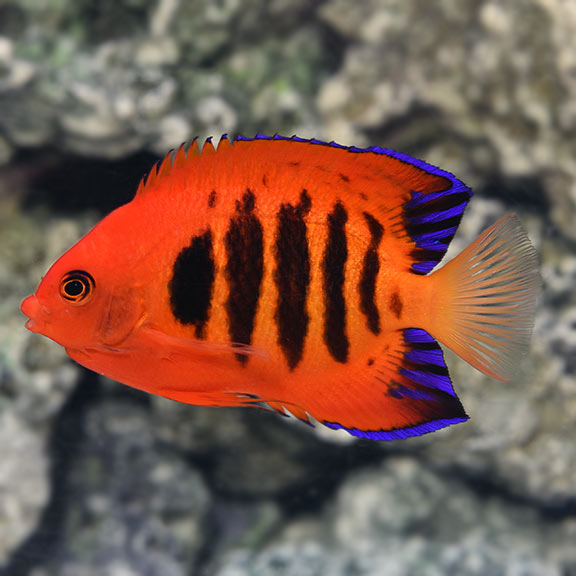
Additional locales and sizes may be available!
Additional locales and sizes may be available! Email me when availableQuick Stats
What do these Quick Stats mean? Click here for more information
What do these Quick Stats mean? Click here for more information
Overview
Did you know that this specimen ships from our LiveAquaria® Wisconsin Facility, home of our popular Diver's Den® WYSIWYG Store and our LiveAquaria® Certified Captive Grown Corals (CCGC)? What that means is that you can rest assured knowing this specimen received the highest level of care from our experienced and professional LiveAquaria® staff!
PLUS, hobbyists that use our LiveAquaria® Professional Reef Salt have the added benefit knowing marine species shipped from our LiveAquaria® Wisconsin Facility share the same water parameters. In other words, if you use our Professional Reef Salt, marine species shipped from our Wisconsin Facility will acclimate and transition to your home aquarium with less stress to set the foundation for longer term success.
The Flame Angelfish is a flashy addition to many aquariums. One of the most popular of the dwarf angelfish, the Flame Angelfish is a bold red/orange color with vertical black stripes highlighting the body and horizontal black stripes along the caudal portions of the blue-tipped dorsal and anal fins.
The Flame Angelfish requires at least a 70-gallon aquarium with lots of hiding places and live rock for grazing. The Flame Angelfish is prone to nip at stony and soft corals, sessile invertebrates, and clam mantles. If the Flame Angelfish is to be added to a peaceful community, it should be the last fish introduced. The Flame Angelfish adapts well to aquarium life, but should be kept in an established system and housed with dissimilar genera. The Flame Angel is very sensitive to elevated levels of copper, and should never be exposed to levels near or above 0.15 ppm.
The Flame Angelfish is hermaphroditic, very difficult to breed in an aquarium, and has no distinguishable differences in color between male to female.
The diet of the Flame Angelfish should consist of Spirulina, marine algae, high-quality angelfish preparations, mysis or frozen shrimp, and other high-quality meaty items.
There are slight differences in both coloration and markings of this species based on the location of collection. Flame Angelfish from the Central Pacific include both Marshall Islands and Christmas Island. Marshall Island Flame Angelfish are redder in color, with thicker black bars running vertically down the body. Christmas Island Flame Angelfish are normally red/orange coloration with thin black bars running vertically down the body. Flame Angelfish from Cebu are red/orange with undefined black bars and a tint of yellow in between the bars. Flame Angelfish from Tahiti are rarely collected and are blood red in coloration and possess very little to no yellow. It is important to note that these color descriptions are a general guideline. Please expect variation among each fish. The price differences between different varieties reflect the difference in collection, transportation and importation expense.
Approximate Purchase Size: Small; 1" to 2" Medium; 2" to 2-3/4" Large; 2-3/4" to 4"











